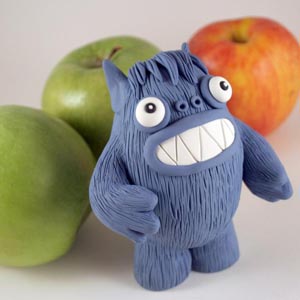You have no items in your shopping cart.
Why Plasticine is So Popular in Mould-Making
 Did you know plasticine has been in use for over a century? Most people recognize the brightly coloured clay as a tool for children, but it has various uses and functions. Plasticine became a popular tool for filmmaking in the 1980’s in the United States with a technique known as Claymation, and has been used by filmmakers and artists alike since then.
Did you know plasticine has been in use for over a century? Most people recognize the brightly coloured clay as a tool for children, but it has various uses and functions. Plasticine became a popular tool for filmmaking in the 1980’s in the United States with a technique known as Claymation, and has been used by filmmakers and artists alike since then.
Plasticine’s Origin
William Harbutt, an art teacher from Bath, England, decided that he wanted non-drying clay for his students to create sculptures, so he designed plasticine in 1897. Though the exact formula is a secret, the original composition was comprised of calcium salts (principally calcium carbonate), petroleum jelly, and long-chain aliphatic acids. The natural contents allow it to be non-toxic and sterile, ideal for Harbutt’s students. The composition is soft, malleable and does not dry out from exposure to air.
Plasticine in Claymation
Plasticine is appealing to animators because the material can be used with ease: it is malleable enough to create a character, and flexible enough to allow the character to move in many ways. Additionally, its soft texture allows for artists to use tools to create the finest of details on characters. For both amateur and advanced users, it’s important to purchase plasticine from suppliers that offer the best products. After all, many companies promote “plasticine-like” products, that aren’t actually as safe and non-toxic as plasticine.
At Dalchem, we’ve built a team of supply experts who can assist you with all of your purchasing needs. We endeavour to provide you with the most courteous service and up to date information regarding your order.
We pride ourselves in providing the best service to customers worldwide.


